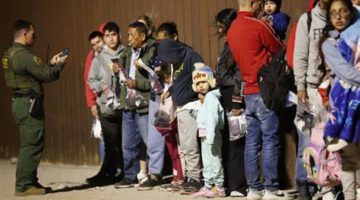FORT LAUDERDALE – Broward Sheriff Scott Israel met with a group of pastors this week to discuss possible reactions to the verdict in the second degree murder trial of George Zimmerman for his fatal shooting of Trayvon Martin in February 2012.
“We don’t have information about a specific event that might take place at the conclusion of the trial but we encourage everyone to keep any protests peaceful,” Israel said in a statement.
The Broward Sheriff’s Office (BSO) released the statement, along with a public service announcement video featuring young people singing, in part: “Raise your voice/And not your hands/We need to stand together as one/No cuffs no guns/Let’s give violence a rest/Cuz we can easily end up arrested/I know your patience will be tested/But law enforcement has your back.”
BSO said it created the video with the help of kids from the Jason Taylor Foundation, H.A.N.D.Y. (Helping Abused, Neglected, Disadvantaged Youth) and Miami Heat player James Jones.
The BSO statement said it was “working closely with the Sanford Police Department and other local law enforcement agencies, has coordinated a response plan in anticipation of the verdict.”
“Freedom of expression is a constitutional right. While raising your voice is encouraged, using your hands is not,” the statement said.
BSO added that members of its Strategic Investigation Division “have been monitoring the pulse of the situation, maintaining open lines of communication with community leaders, civic activists, members of the clergy, as well as local, state and federal agencies.
The BSO initiatives come as officials of Miami-Dade County and the local NAACP branch push to keep the lid on any possible violent protest in case Zimmerman is acquitted on the charge of killing Trayvon.
The Miami-Dade County Community Relations Board organized another in a series of community meetings Tuesday night, held at the North Dade Regional Library in Miami Gardens.
The NAACP followed up with a town hall forum Wednesday night at New Harvest Missionary Baptist Church, also in Miami Gardens, hometown of Trayvon, who was visiting his father in Sanford when Zimmerman shot and killed him on Feb. 26, last year.
The trial in a Sanford courthouse was winding down midweek with closing arguments set for this Thursday and the case going to the jury after that.
Zimmerman told the judge Wednesday that he did not want to testify on his own behalf. Defense attorneys pulled a surprise by calling Trayvon’s father,
Tracy Martin, to testify on Zimmerman’s behalf regarding who was calling for help before Zimmerman shot the teenager.
Martin contradicted two police officers who testified that he had told them the voice was not his son’s. He said he told them he couldn’t say whether it was. Trayvon’s mother Sybrina Fulton was emphatic that the voice was his.
Several witnesses, including Zimmerman’s mother, Gladys, testified that the voice was Zimmerman’s.
As the trial proceeded, the following was reported by the Associated Press:
• Trayvon’s DNA was not found on the grip of Zimmerman’s gun and Zimmerman’s DNA was not found under the teen’s fingernails, according to Florida Department of Law Enforcement (FDLE) DNA expert Anthony Gorgone.
• FDLE analyst Amy Siewert testified that tearing and residue on Trayvon’s clothing showed the gun was directly against him when it fired.
• Dr. Vincent Di Maio, an expert on gunshot wounds hired by the defense, testified that Zimmerman’s account of how he shot Trayvon was consistevnt with the forensic evidence. He said the trajectory of the bullet and gun powder on Trayvon’s body supported Zimmerman’s version that the teen was on top of him when Zimmerman fired his gun into the teen’s chest. The gun’s muzzle was against Trayvon’s clothing and it was anywhere from two to four inches from his skin, the witness said.
• Judge Debra Nelson, who is presiding over the trial, ruled Wednesday that Trayvon’s cellphone texts on fighting and a defense animation depicting the fight between him and Zimmerman won’t be introduced as evidence at the trial.
She also ruled against introducing during the trial a computer animation which the defense wanted to play. She seemed concerned about the animation’s accuracy during arguments. She ruled it can’t be introduced as evidence that can be reviewed by jurors during their deliberations but defense attorneys may be able to use it during closing arguments.









No Comment